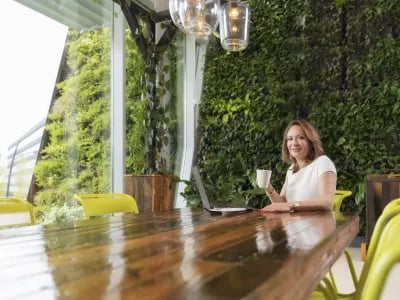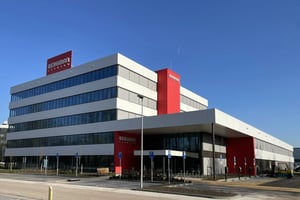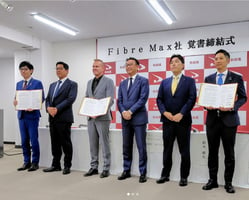The traditional perception of buildings as mere structural enclosures for physical shelter is changing: buildings are increasingly evolving into repositories of data sourced from building management systems. These, in turn, are linked to the IT infrastructure and business systems run by facility management departments. As we learn from Alexandra Boot, real estate lawyer and co-founder of the Blue Building Institute, this trend is set to change the game between investors and property developers, and landlords and tenants in the future. Five questions about the future of ‘smart buildings’.
Could you define ‘smart building’?
‘There’s no standard definition of the term ‘smart building’ yet, but I would personally put a building in this category if it’s equipped with integrated technologies that enable you to monitor the building’s user performance. The actual type of available technology or smart connections you might use to do so is not really relevant; what matters is that you can control certain parameters, including energy consumption, maintenance costs and facility expenses. You also need to act prudently from a financial, technical and legal point of view. That’s what most companies are aiming for, and many find the task to be very challenging. As a lawyer specialising in construction and real estate, I try to apply my years of experience in procurement law and property law in creating innovative contract types that make it possible to truly achieve this type of integrated approach.’
You and CSR expert Lara Muller founded the Blue Building Institute. What was your mission in doing so?
‘The International Well Building Institute’, which is based in the United States, developed a certification system called the ‘Well Building Standard’, which creates a link between real estate, HR and facility management. We are trying to establish a similar connection between the property and healthcare sectors, and have been working to that effect with experts from both fields. Our ultimate goal is to create healthy environments. We believe that, with smart data being readily available and the introduction of increasingly accurate measuring systems, we’ll see an increased demand for healthy buildings, not just among building owners and investors, but also from users and/or tenants. The focus, in that case, is not only on cutting expenses, but also on increasing productivity and the health and wellbeing of your most valuable asset: your employees.’













